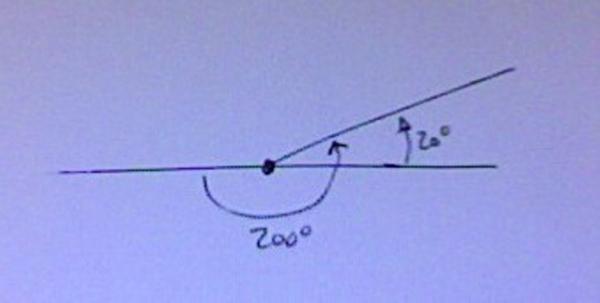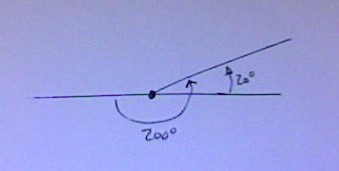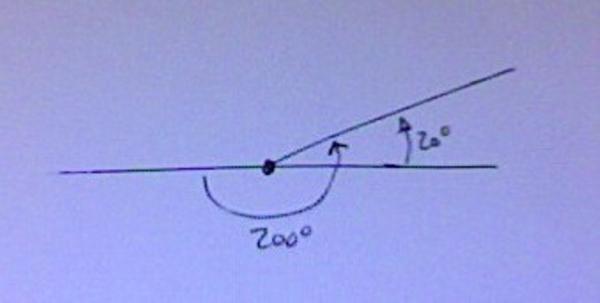Country: USA
Did a search first on this question.
I got a gig doing a remote recording at a church, using a 4 mic rig, recording their band through their PA.
Before recording, I had their sound man run a variety of tones through the room while I walked around and measured with a frequency analyzer. Measured using A weighting.
125Hz was incredibly uneven, at times bordering on complete Null in certain areas, while other areas registered up to 3 db jumps.
I passed by one corner, and the 125Hz was very loud compared to the other corners, which were all 90.
This particular corner was obtuse in angle.
I measured the corner, it was 200 (angle = 20 degrees).
Materials, by what I was told, was 3/4" drywall over wood studs filled with R19.
The room dimension is 50' x 52' x 12'. Nothing was canted.
There was one 12' run on 2 opposite facing walls that were parallel. The other walls were broken up by various soffets and construction design.
Ceiling and Floor are parallel, broken up by apprx 100 chairs that sit on the floor
Floor was covered with standard grade commercial carpet.
There is no acoustic treatment in the room.
Their PA speakers are mounted. They are actives, 12" and horn, 4 of them hung above their stage in a horizontal array, although upon inspection I saw that these were speakers designed to be placed vertically and they had them hung horizontally, spaced in a semi-arc, top of speakers are 9" from the ceiling.
My question is regarding that corner, because it was projecting the highest amount of 125hz out of all the corners in the room. I measured standing 2-3' away from the corner.
Here is a drawing of the corner:
My question is this: I was always under the impression that tighter corners were the culprits in creating standing Wavesof low freq's. Can you explain to me how this wider angle is creating such a tremendous projector source for low end?
Tags
Comments
I've never encountered anything like this before. There was such
I've never encountered anything like this before. There was such a huge difference in that obtuse corner. There are null points throughout the room, as well as exaggerated low frequency areas. A step or two in any given direction culminates in dramatic differences.
This corner is located about 2 ft away from an entrance, which is a double-door. Opening or closing the doors made no difference.
I understand that the room was built as a chapel, and acoustics weren't figured into the equation...but they should have been. It's a more modern church, and so many of these modern churches have small bands and do a lot of music as a part of their services. It's unfortunate that no one stepped up in the design phase and said..."hey... we're going to have live music in here, and we are going to be recording too - shouldn't we consult someone before we put a hammer to a nail?"
Unfortunately, acoustics are usually and after-thought in modern
Unfortunately, acoustics are usually and after-thought in modern church design. I've only seen one new build in 15 years where the architect brought in a bona fide acoustical engineer to consult. And then they partially ignored his input anyway, or the contractors called an audible, because the bulkheads around the perimeter and pan ceiling didn't turn out anything like the original drawings.
I was shown Ver. #1.0 of some blueprints last month for a new church, to help plan for their A/V equipment and conduit etc. While I'm certainly no acoustical engineer, I know a sonic red flag when I see one. Their design is square, so I asked if they would consider making it a rectangle with the same sq. footage. Their response was instantaneous, 'nope, what else you got?' So given a clear choice between expensive, aesthetically obtrusive, marginally effective acoustical treatments; they would rather stick with the square floor plan and deal with it after the building is done. And it's not as if they have any deadline, space constraints, or even a very strong reason not to do a simple nudge to the dimensions. So that's what we're up against.
Donny, can you do a quick sketch of the perimeter of the room with the 200˚ angle(s) and speaker placement? If it's a hassle, don't worry about it, just morbid curiosity really.
" I was always under the impression that tighter corners were th
" I was always under the impression that tighter corners were the culprits in creating standing Waves of low freq's. Can you explain to me how this wider angle is creating such a tremendous projector source for low end?"
No sir that is incorrect. Standing waves are a by product of the dimensions of the room and the hard parallel boundaries specifically.
Frequency builds up in corners as a result of vibration towards the edges of the panels, this is why corners are always subject to low frequency distortions.
I would think, site unseen that you have either located and are exciting a natural frequency area or some particular configuration in that rooms is creating this build up.
I'm probably missing something. Maybe it's just me, but I'm hav
I'm probably missing something. Maybe it's just me, but I'm having a hard time visualizing a room with a 200˚ angle that would be described as a corner. It seems to me, that if you start building a room with a couple reflex angles - larger than 180˚ - you would end up standing outside. For every reflex angle, or obtuse angle, there would have to be a corresponding acute angle somewhere to make the geometry work out. I can imagine an alcove, or offset in a wall, that would incorporate a couple reflex angles, but I'm struggling with how that becomes a corner of the room with 'nothing canted.' I'm hoping a drawing will shed some light on it for me. Again, don't put too much effort into it on my account. I'm just an interested observer, and maybe I'm just being obtuse.







In doing remote's and live work I've seen this kind of thing bef
In doing remote's and live work I've seen this kind of thing before, and it can be amazing how it doesn't initially appear obvious for build ups and nulls.
There's usually something in one of the other corners that's the culprit, or there's something really unusual about that particular corner... (or a combination of the two)
Maybe there's extra mass, like a brick wall... or lack of mass, like a hollow floor, or the ceiling has some extra vaulting... or the speakers are angled just enough. But you can be pretty much assured that there is a lack of symmetry in construction, the room "furnishings", in the foundation, and/or the roof line that's the cause.